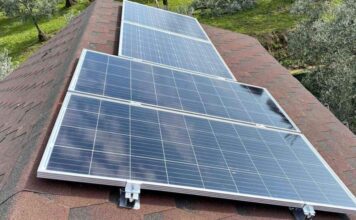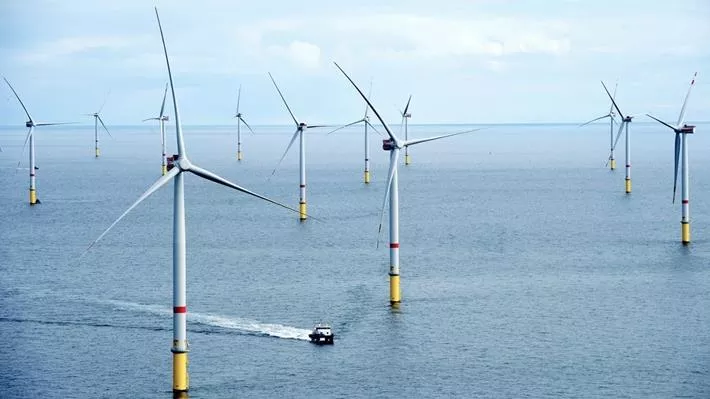The world’s largest and fastest floating offshore wind farm to start generating power comes from a company that has always been known for its huge carbon emissions.
It is Equinor, founded in 1972, and is the 11th largest oil and gas company in the world and a major supplier of natural gas to Europe.
Norwegian Petroleum has been relying on oil for half a century, but under the wave of carbon reduction, it has to start a transformation.
In 2021, the oil and natural gas produced by Norwegian Petroleum in its hometown of the Norwegian continental shelf will reduce carbon dioxide emissions by more than half of the global average, with a carbon emission of 8 kilograms per barrel.
Statoil has also committed to reduce Norway’s carbon emissions to near zero by 2050.
In 2021, Statoil has received the highest ESG AAA rating from the rating agency MSCI.
The rating agency Morningstar’s 2020 report also affirmed that it is actively transitioning to renewable energy, and it is tied with the other three oil giants Shell, TotalEnergies, and Repsol.
In contrast, Morningstar noted that many oil majors larger than Statoil remain focused on their original business.
How did Norwegian Petroleum do it?
The first transition, powering oil fields with renewable energy.
In mid-November this year, the offshore wind farm in the middle of the North Sea generated electricity for the first time.
The 7 wind turbines are located in the middle of the two oil fields, supplying 35% of the electricity demand of the two oil fields, and are expected to reduce the annual carbon emissions by 200,000 tons.
The financial website CNBC reported that the wind farm Hywind Tampen is the world’s largest floating offshore wind farm.
Huge turbines are installed on floating concrete platforms and then fixed to the seabed with cables. The advantage is that they can be installed in areas with deep sea water. For example, Hywind Tampen is 140 kilometers away from the coast of Norway, with a depth of 260-300 meters.
Compared with traditional offshore wind turbines, the installation of floating wind turbines consumes less materials and will not disturb the marine ecology.
Traditional offshore wind turbines are installed on the offshore seabed, and the underwater foundation must first be driven into the seabed.
The process of supporting the whole wind turbine with foundation piles will consume a lot of base pipe frames.
Floating offshore wind turbines can reduce piling, noise pollution and marine ecological disturbance.
In fact, Norwegian Petroleum has long planned to use renewable energy for power supply. In 2017, it built the world’s first floating wind farm with 5 wind turbines.
There are 7 wind turbines in the wind farm that has just been put into operation, and another 4 wind turbines will be added to the ranks of power generation next year.
The second transformation is that Norwegian Petroleum develops advanced subsea equipment, which is not only more energy-efficient, but also extends the life of oil and gas fields.
In 2016, two subsea gas compressors were installed near the Norwegian offshore Åsgard oil and gas field,
It is the world’s first gas compression equipment operating below sea level 300 meters.
This innovation takes into account both the reduction of environmental damage and the productivity of oil and gas fields.
The so-called gas compression equipment means that when the oil and gas field gets older and the amount of oil gradually decreases, the pressure in the rock formation will drop, causing the oil to stop flowing.
In order to stabilize production, oil companies have to use compressors to inject gas into oil wells, increase the pressure, and help oil flow out of oil wells.
In the past, the traditional way was to operate the compressor on a sea-level platform, and a machine used a lot of steel and other consumables.
However, Statoil’s subsea compressors are 60% smaller in size and weight, and their energy consumption is also halved.
Therefore, Statoil commissioned MAN Energy Solutions to manufacture special subsea compressors to ensure safe and stable operation of the equipment on the seabed.
After installation, the recovery rates of the two gas reservoirs Midgard and Mikkel increased from about 50% and 60% to 87% and 84% respectively.
Efficiency has been greatly increased, and because more natural gas can be recovered, the production life of the gas field has been extended to 2032.
“Subsea gas compression is the technology of the future, bringing us closer to the ambition of subsea factories,” said Margareth Øvrum, executive vice president of Statoil.
The third transformation is to improve the problem of gas flaring, which oil companies have been criticized for wasting natural gas.
Natural gas flaring is a combustion phenomenon. Usually, the oil field has too much capacity to collect the natural gas produced by the oil production process, so the natural gas has to be burned on the spot, generating a large amount of greenhouse gases.
In 2008, Norway’s oil-related carbon emissions were 1.2 million tons. Through strict control, the relevant carbon emissions have been reduced by nearly 70%, and by 2021 there will be only 365 million tons.
“This is the measure we are most proud of,” energy manager Knut Helland told the Financial Times.
However, on the road to carbon reduction, oil companies seem to be burdened with “original sin”.
Environmentalists criticize the journey toward an energy future that should stop powering oil companies with renewable energy and focus entirely on developing renewable energy.
Therefore, in addition to reducing the carbon emissions generated during the manufacturing process.
Statoil is also starting to do carbon capture — additionally capturing and sequestering more carbon dioxide from the air — in hopes of moving closer to the daunting goal of net-zero carbon emissions.
In August, Statoil and German oil company Wintershall Dea announced a joint effort to develop a carbon capture project.
They want to build a subsea pipeline that is more than two Taiwan lengths, transport carbon dioxide equivalent to 20% of German industry emissions from northern Germany to the coast of Norway, and store it under the North Sea.
In the past, the rich oil and gas in the Norwegian continental shelf became the backbone of the Norwegian economy, accounting for 14% of the country’s GDP, and also allowed the Norwegian oil company to grow into a giant.
But at this moment of “redemption” that has to be transformed, how to use innovation to balance sustainability and business will be the biggest issue.





